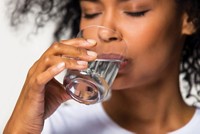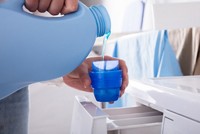Advertisement
Grab your lab coat. Let's get started
Welcome!
Welcome!
Create an account below to get 6 C&EN articles per month, receive newsletters and more - all free.
It seems this is your first time logging in online. Please enter the following information to continue.
As an ACS member you automatically get access to this site. All we need is few more details to create your reading experience.
Not you? Sign in with a different account.
Not you? Sign in with a different account.
ERROR 1
ERROR 1
ERROR 2
ERROR 2
ERROR 2
ERROR 2
ERROR 2
Password and Confirm password must match.
If you have an ACS member number, please enter it here so we can link this account to your membership. (optional)
ERROR 2
ACS values your privacy. By submitting your information, you are gaining access to C&EN and subscribing to our weekly newsletter. We use the information you provide to make your reading experience better, and we will never sell your data to third party members.
Chemical Regulation
Detergent impurity not a risk to consumers, US EPA says
Draft evaluation of 1,4-dioxane, a likely carcinogen, also finds no unreasonable risks to general population
by Britt E. Erickson
November 20, 2020
Laundry and dishwasher detergents, paints, floor lacquer, and other products that contain small amounts of 1,4-dioxane as an impurity pose no unreasonable risks to consumers, the US Environmental Protection Agency says in a draft supplemental assessment released Nov. 19. The agency also finds no unreasonable risks to the general population from current industrial releases of 1,4-dioxane into surface water.

The EPA expanded the scope of its 1,4-dioxane assessment after environmental groups and an advisory panel of experts criticized the agency for not considering risks of 1,4-dioxane to consumers and the general population.
1,4-dioxane is one of the first 10 chemicals the EPA is evaluating under 2016 revisions to the Toxic Substances Control Act (TSCA). The agency considers the chemical “likely to be carcinogenic to humans.” In its initial draft assessment of the chemical, released in June 2019, the EPA found unreasonable risks to workers exposed to 1,4-dioxane in some industrial applications.
Environmental groups that criticized the 2019 assessment claim that the latest supplement does little to improve the evaluation because the EPA ignores exposure to 1,4-dioxane from contaminated groundwater used for drinking water. Former disposal of the solvent in unlined ponds and leaking underground storage tanks has led to 1,4-dioxane contamination of many US aquifers.
“While we have yet to closely examine the document, it is already apparent that the agency has again ignored a major way millions of Americans are exposed to 1,4-dioxane—through their drinking water—thereby dramatically underestimating the risk the chemical poses,” Richard Denison, a lead senior scientist at the Environmental Defense Fund, says in a statement.
The cleaning products industry, which is fighting states that have imposed limits on 1,4-dioxane in personal care and cleaning products, welcomed the EPA’s expanded assessment.
The American Cleaning Institute and other industry groups previously urged the EPA to include 1,4-dioxane byproducts in personal care and cleaning products in the TSCA evaluation. If the EPA excluded such uses, as it initially did, states would be free to impose restrictions. But if the EPA determines such uses pose no unreasonable risks to consumers, states would be preempted from restricting such uses.
The EPA is accepting public comments on the supplemental analysis for 20 days. The agency expects to finalize the assessment by the end of this year.





Join the conversation
Contact the reporter
Submit a Letter to the Editor for publication
Engage with us on Twitter